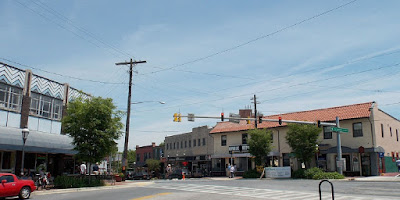Cultural and Gastronomic Experiences
in Italy Germany Netherlands Portugal and Croatia
Personalized
Travel Programs for families, schools and theme groups with educational
workshops, food & wine itineraries and visits to museums, medieval
villages, city and country itineraries, nature parks and archeological sites.
Rotterdam Netherlands
Maritime Museums
Walking and Boat Tours Original and fascinating professional guided
walking tours. The heart of the second-largest city in the Netherlands lies
inside a triangle of main roads. This inner city can easily be explored on foot
within this triangle. The relatively short distances make a walk along
beautiful and interesting sights and exceptional museums, the perfect way to
discover Rotterdam. More
Düsseldorf Germany
Walking Tours Castles Fashion
Museums and Rhine River Cruises
Düsseldorf is the cosmopolitan capital of North-Rhine-Westphalia, Germany`s
state with the country`s largest population. The city has close to 600,000
inhabitants and is known for its old quarter – Altstadt – with nightlife and
buildings which date back to the 16th century. Here, you can taste
the famous Altbier – a dark beer. More
Portugal
Lisbon
Porto and the Douro Valley Lisbon a City of Lights and Contrasts is both
Atlantic and Mediterranean, illuminated by an extraordinary light that
contrasts with landscaped hills tumbling towards the Tagus river. More
Italy
Abruzzo
is located on the Adriatic Coast, east of Rome. It is home to national parks,
hilltop medieval and Renaissance towns and numerous nature reserves. The
Apennine mountain chain forms much of its interior while the coastal plain has
sandy beaches and dunes. more
Basilicata, also known as Lucania, is a southern
Italian region bordering with Campania to the west, Apulia to the north and
east, and Calabria to the south, with one coastline on the Tyrrhenian Sea
between Campania and Calabria, and a longer one in the Gulf of Taranto on the
Ionian Sea. more
Campania the
ancient Romans called this region of Italy Campania
Felix. Baia, Puteoli, Pompeii, Stabia and Capri were their favorite
destinations. Then and now, Happy Campania is famed for its ancient ruins,
coastal resorts and world renowned culinary traditions. A cultural and national
capital for much of its nearly three thousand year history, Naples is home to
art museums, the San Carlo opera house and a spectacular bay framed by Mt. Vesuvius,
affectionately and fearfully referred to by the local inhabitants as The Monster. more
Lazio - Latium is mainly flat and hilly, with small
mountainous areas in the eastern and southern districts. The coastline is mainly
composed of sandy beaches. Behind the coastal strip, to the north, lies the coastal
plain of Maremma Laziale. The center is occupied by the Roman countryside, a
vast alluvial plain surrounding the city of Rome, and the south is
characterized by flatlands. The Apennines of Latium are marked by the Tiber
River valley and three mountains of volcanic origin whose craters are occupied
by Lakes Bolsena, Vico and Bracciano. South of the Tiber, the Alban Hills, are
of volcanic origin. more
Marche is slowly being
discovered as the new Italian frontier; an abridged expression of the varied
charms of Italy with a variety of attractions offered seasonally and year-
round, including: authentic foods, breathtaking landscapes, a lively cultural
landscape, artistic and natural treasures. more
Apulia (Puglia) is located in southern Italy; it borders the Adriatic
Sea in the east, the Ionian Sea to the southeast, and the Strait of Otranto and
Gulf of Taranto in the south. Its southernmost portion, the Salento peninsula,
forms a high heel on the boot of Italy. more
Croatia
Things
to See Hear and Taste during the Holiday Season in Zagreb. More
 Zagreb is the capital and the
largest city of the Republic of Croatia. The first recorded appearance of the
name Zagreb dates back to 1094, at which time the city existed as two different
city centers: the smaller, eastern Kaptol, inhabited mainly by clergy and
housing the Zagreb Cathedral, and the larger, western Gradec, inhabited by
farmers and merchants. They were united in 1851. More on Zagreb
Zagreb is the capital and the
largest city of the Republic of Croatia. The first recorded appearance of the
name Zagreb dates back to 1094, at which time the city existed as two different
city centers: the smaller, eastern Kaptol, inhabited mainly by clergy and
housing the Zagreb Cathedral, and the larger, western Gradec, inhabited by
farmers and merchants. They were united in 1851. More on Zagreb




















